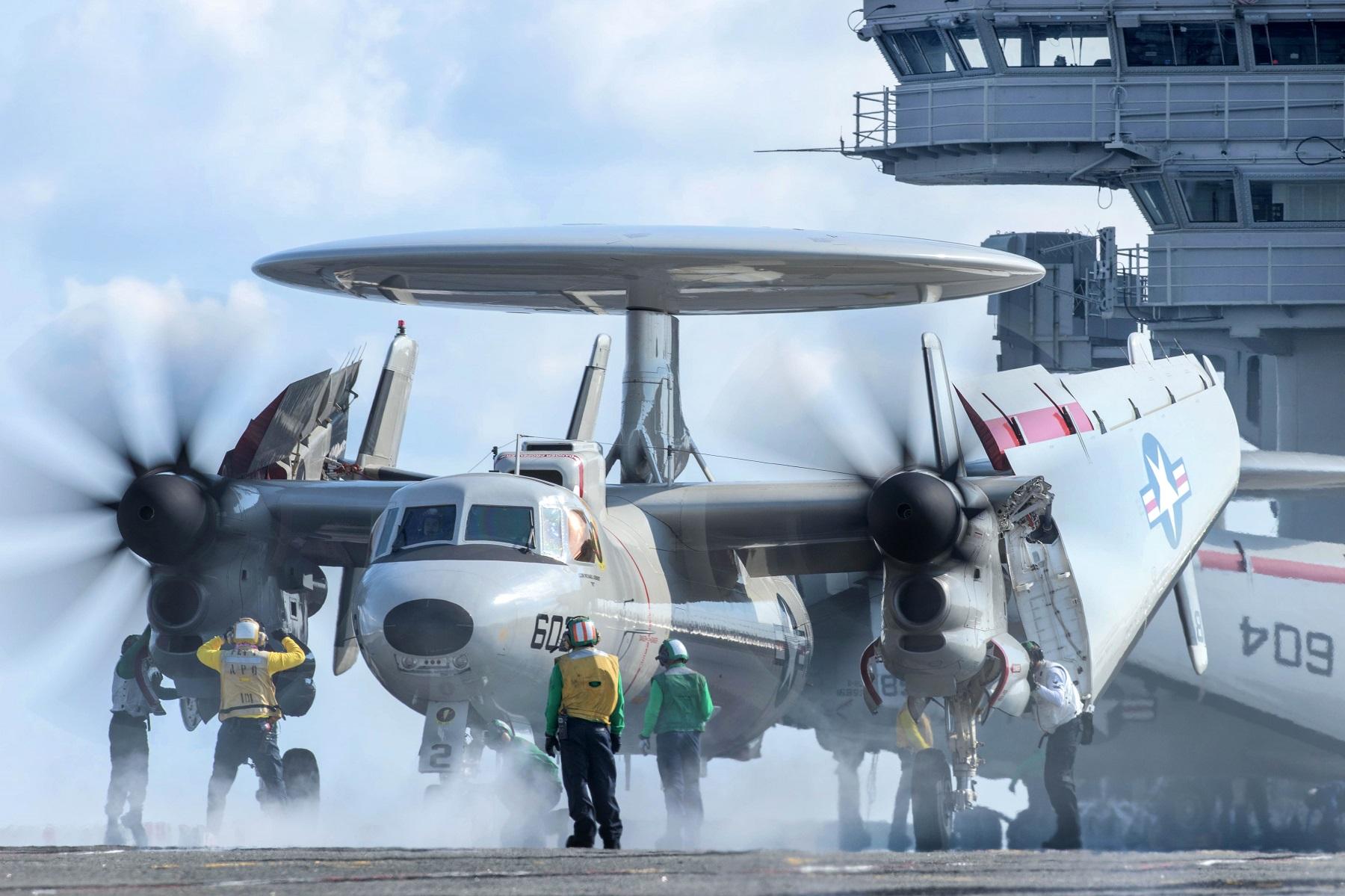Northrup Grumman Systems Corp. Aerospace Systems, Melbourne, Florida, is awarded a $1,456,019,386 modification to a previously awarded fixed-priced-incentive-fee, cost-plus-fixed-fee, cost contract. This modification procures nine E-2D Advanced Hawkeye aircraft (four for the U.S. Navy and five for Japan Air Self-Defense Force), to include over and above support. Work is expected to be completed in March 2029. Fiscal 2024 aircraft procurement (Navy) funds in the amount of $369,025,770; Fiscal 2023 aircraft procurement (U.S. Navy) funds in the amount of $320,350,102; and Foreign Military Sales customer funds in the amount of $766,643,514, will be obligated at the time of award, none of which will expire at the end of the fiscal year. Naval Air Systems Command, Patuxent River, Maryland, is the contracting activity.
The Northrop Grumman E-2 Hawkeye is an American all-weather, carrier-capable tactical airborne early warning (AEW) aircraft. The aircraft’s performance has been upgraded with the E-2B and E-2C versions, where most of the changes were made to the radar and radio communications due to advances in electronic integrated circuits and other electronics. The fourth major version of the Hawkeye is the E-2D, which first flew in 2007. The E-2 was the first aircraft designed specifically for AEW, as opposed to a modification of an existing airframe, such as the Boeing E-3 Sentry. Variants of the Hawkeye have been in continuous production since 1960, giving it the longest production run of any carrier-based aircraft. In addition to U.S. Navy service, smaller numbers of E-2s have been sold to the armed forces of Egypt, France, Israel, Japan, Mexico, Singapore and Taiwan.

VAW-120, the E-2C fleet replacement squadron began receiving E-2D Advanced Hawkeyes for training use in July 2010. On 27 March 2014, the first E-2Ds were delivered to the VAW-125. The E-2D achieved Initial Operational Capability (IOC) in October 2014 when VAW-125 was certified to have five operational aircraft. This began training on the aircraft for its first operational deployment, scheduled for 2015 aboard USS Theodore Roosevelt. The E-2D will play a larger role than that of the E-2C, with five E-2Ds aboard each carrier instead of the current four C-models, requiring the acquisition of 75 total E-2Ds. On 11 March 2015, the Theodore Roosevelt Carrier Strike Group departed Naval Station Norfolk and returned to port on 23 November 2015, concluding the first operational use of the E-2D.
On 21 November 2014, the Japanese Ministry of Defense officially decided to procure the E-2D version of the Hawkeye, instead of the Boeing 737 AEW&C design. In June 2015, the Japanese government requested to buy four E-2Ds through a Foreign Military Sale. In September 2018 the Defense Security Cooperation Agency (DSCA) notified Congress of the possible sale of up to nine E-2Ds to Japan. A sale of up to five E-2Ds for JASDF was approved by the U.S. State Department and DSCA notified Congress on 7 March 2023. The sale includes ancillary equipment, spares and training support for an estimated $1.38 billion. The proposed five E-2Ds are in addition to the six E-2Ds Japan already has and the seven more it has on order. However, the Japanese Ministry of Defense did not reveal in its most recent proposed budget any intention to acquire more aircraft.












